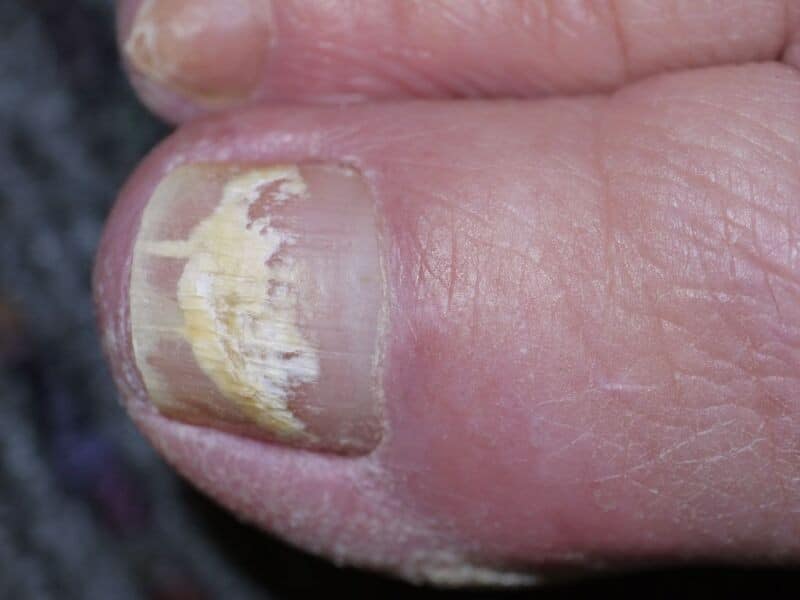Superficial White Onychomycosis

One kind of onychomycosis, known as white superficial onychomycosis (WSO), has a superficial fungal localization on the nail plate’s dorsal side. The intricate host-parasite connections are the root cause of the severity and rapid spread of WSO. This condition is often unusual and affects the top layer of the nails, especially the toenails.
White onychomycosis affects only 10 percent of people with onychomycosis. Fungi may penetrate the nail plate directly, causing very visible white spots on the nail plate. These areas eventually join together to affect the nail plate as the infection advances. The nail plate is flaky, and the discoloration is white rather than cream. It causes the nail to become brittle, flaky, and rough.
T. mentagrophytes is the causative agent of superficial white onychomycosis. It affects the top of the nail plate rather than the nail bed and is far less prevalent than distal and lateral subungual onychomycosis.
Intercurrent foot infection is less prevalent in superficial white onychomycosis than in distal and lateral subungual onychomycosis. Onycholysis, where the nail is disintegrated from the nail bed, is also uncommon. Furthermore, the condition is often effectively treated with mechanical debridement of the afflicted region and topical antifungal medications.










